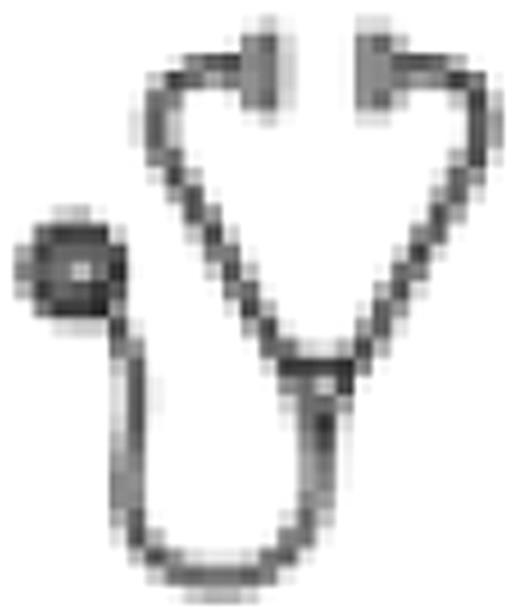Abstract
Abstract 637
PNH is characterized by complement (C)-mediated chronic intravascular hemolysis (IVH) due to the absence of CD55 and CD59 on erythrocytes (E) and subsequent impaired C regulation. C alternative pathway (CAP)-derived normal ongoing low level activity (termed the tickover mechanism) is the pivotal initial step, which subsequently leads to C3 fragment (C3frag) deposition on E followed by membrane attack complex (MAC)-mediated IVH. C3frag processing on E proceeds from the initially covalently attached C3b form that is serially converted through proteolysis, mediated on E by factor I and cofactors factor H and complement receptor 1 (CR1), to iC3b and then to C3d as forms that all remain membrane-bound. To develop an improved mechanistic understanding of this process in PNH, which results in C3frag accumulation and extravascular hemolysis (EVH) in vivo during eculizumab (Ecu) treatment, herein we exploited an in vitro model to characterize and dissect C3frag generation after CAP activation on PNH E. We used monoclonal antibodies (mAbs) specific for the different C3 fragments, including C3b/iC3b (mAbs 2C5, 3C11, 3E7, 7C12 and 8E11) and C3b/iC3b/C3d (mAbs A702, 1H8 and 14A10). We also investigated the effect of the C inhibitors (C-Inh) Ecu, 3E7 (a CAP-inhibitory anti-C3b/iC3b mAb) and TT30 (a cell surface-targeted CAP-inhibitory complement receptor 2/factor H fusion protein) on C3frag accumulation and hemolysis of PNH E. E from PNH patients, either naïve or on Ecu treatment, were washed and incubated in ABO-matched acidified normal human serum (aNHS). Assessment of hemolysis and C3 activation and processing was performed by serial flow cytometry analyses of both intact E and E ghosts, as previously described (Risitano et al, Blood 2009; Lindorfer et al, Blood 2010). We first studied E from PNH patients on Ecu, which were known to be C3frag+ using an anti-C3 polyclonal Ab (pAb). Only the anti-C3b/iC3b/C3d mAbs A702, 1H8 and 14A10 demonstrated binding to these PNH E, with a pattern overlapping with that of the anti-C3 pAb, while the anti-C3b/iC3b mAbs 2C5, 3C11, 3E7, 7C12 and 8E11 did not bind. To investigate the kinetics of generation of specific C3frag on PNH E, fresh E from untreated PNH patients that did not show either membrane-bound C3b/iC3b or C3d were exposed in vitro to aNHSs. Analysis at 1h and 24h revealed that intact E, which remained C3frag-negative, progressively decreased and finally disappeared, being transformed into C3b/iC3b+ and C3d+ ghosts. In the presence of Ecu (using serum from patients on Ecu treatment, drawn within 1h of dosing), the same experiments revealed a dramatic reduction of hemolysis, but residual CAP-mediated hemolysis in a process of pharmacodynamic breakthrough was confirmed by the presence of C3b/iC3b+, C3d+, CD59− E ghosts. More interestingly, intact E showed substantial C3frag deposition which progressed over time, initially characterized by the presence of C3b/iC3b and C3d, and subsequently converting after 24h exclusively into C3d+ E, with an identical phenotype as found in C3frag+ PNH E obtained from patients on Ecu. This result demonstrates that PNH E, despite exhibiting only C3d when recovered from patients, pass through an earlier phase where C3b/iC3b frag are present that can interact with their cognate receptors on fixed cells in liver and spleen during EVH in vivo. Both 3E7 and TT30 completely inhibited hemolysis, with an IC50 of 120 μg/mL for 3E7 and 30 μg/mL for TT30; consistent with their mechanism of action, both 3E7 and TT30 bound to PNH RBCs. No C3b/iC3b nor C3d was detected on surviving PNH E at any time, indicating that 3E7 and TT30 effectively inhibit the earliest phases of CAP activation involved in EVH. Similar results were obtained when E from PNH patients on Ecu were challenged in vitro with aNHS in the presence or absence of C-Inh. In conclusion, we demonstrate that CAP-mediated C3b/iC3b fixation to PNH RBCs is the early event leading to IVH or, in presence of Ecu, to C3frag deposition and subsequent EVH in vivo. Unlike Ecu, use of 3E7 or TT30 resulted in complete inhibition of hemolysis as well as CAP-mediated C3 activation, preventing C3b/iC3b and C3d deposition on intact PNH E. Thus, use of this model will allow assessment of the roles of both endogenous and therapeutic C regulators in CAP activation and C3 processing (and subsequent EVH) in PNH. Preclinical data suggest that TT30 is an optimal candidate agent to assess in vivo the effect of CAP inhibition in PNH patients.
Risitano:Taligen Therapeutics: Consultancy, Research Funding. Horvath:Taligen Therapeutics: Employment. Fridkis-Hareli:Taligen Therapeutics: Employment. Holers:Taligen Therapeutics: Employment, Equity Ownership, Membership on an entity's Board of Directors or advisory committees, Patents & Royalties.

This icon denotes an abstract that is clinically relevant.
Author notes
Asterisk with author names denotes non-ASH members.

This feature is available to Subscribers Only
Sign In or Create an Account Close Modal